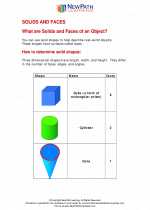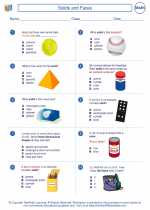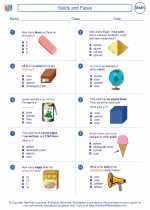Sequences of Numbers
A sequence is a list of numbers in a specific order. Each number in the sequence is called a term. Sequences can be finite (limited to a certain number of terms) or infinite (continuing indefinitely).
Types of Sequences
Arithmetic Sequence
In an arithmetic sequence, each term is obtained by adding a constant value to the previous term. This constant value is called the common difference. The general form of an arithmetic sequence is: a1, a1 + d, a1 + 2d, a1 + 3d, ... where a1 is the first term and d is the common difference.
Geometric Sequence
In a geometric sequence, each term is obtained by multiplying the previous term by a constant value. This constant value is called the common ratio. The general form of a geometric sequence is: a1, a1 × r, a1 × r2, a1 × r3, ... where a1 is the first term and r is the common ratio.
Fibonacci Sequence
The Fibonacci sequence is a special sequence where each term is the sum of the two preceding terms. The sequence starts with 0 and 1, and the subsequent terms are 1, 2, 3, 5, 8, 13, 21, and so on.
Notation
Sequences can be represented using mathematical notation. For example, the nth term of a sequence can be denoted as an.
Sum of a Sequence
The sum of the terms in a sequence can be calculated using specific formulas for arithmetic and geometric sequences. The sum of the first n terms of an arithmetic sequence is given by the formula: Sn = n/2 * (2a1 + (n-1)d), where Sn is the sum and n is the number of terms. The sum of the first n terms of a geometric sequence is given by the formula: Sn = a1(1 - rn)/(1 - r), where Sn is the sum, a1 is the first term, r is the common ratio, and n is the number of terms.
Understanding sequences of numbers is important in various mathematical concepts and real-world applications, such as calculating patterns, growth rates, and financial investments.
[Sequences Of Numbers] Related Worksheets and Study Guides:
.◂Math Worksheets and Study Guides Third Grade. Solids and Faces

 Worksheet/Answer key
Worksheet/Answer key
 Worksheet/Answer key
Worksheet/Answer key
 Worksheet/Answer key
Worksheet/Answer key
 Worksheet/Answer key
Worksheet/Answer key
 Worksheet/Answer key
Worksheet/Answer key
